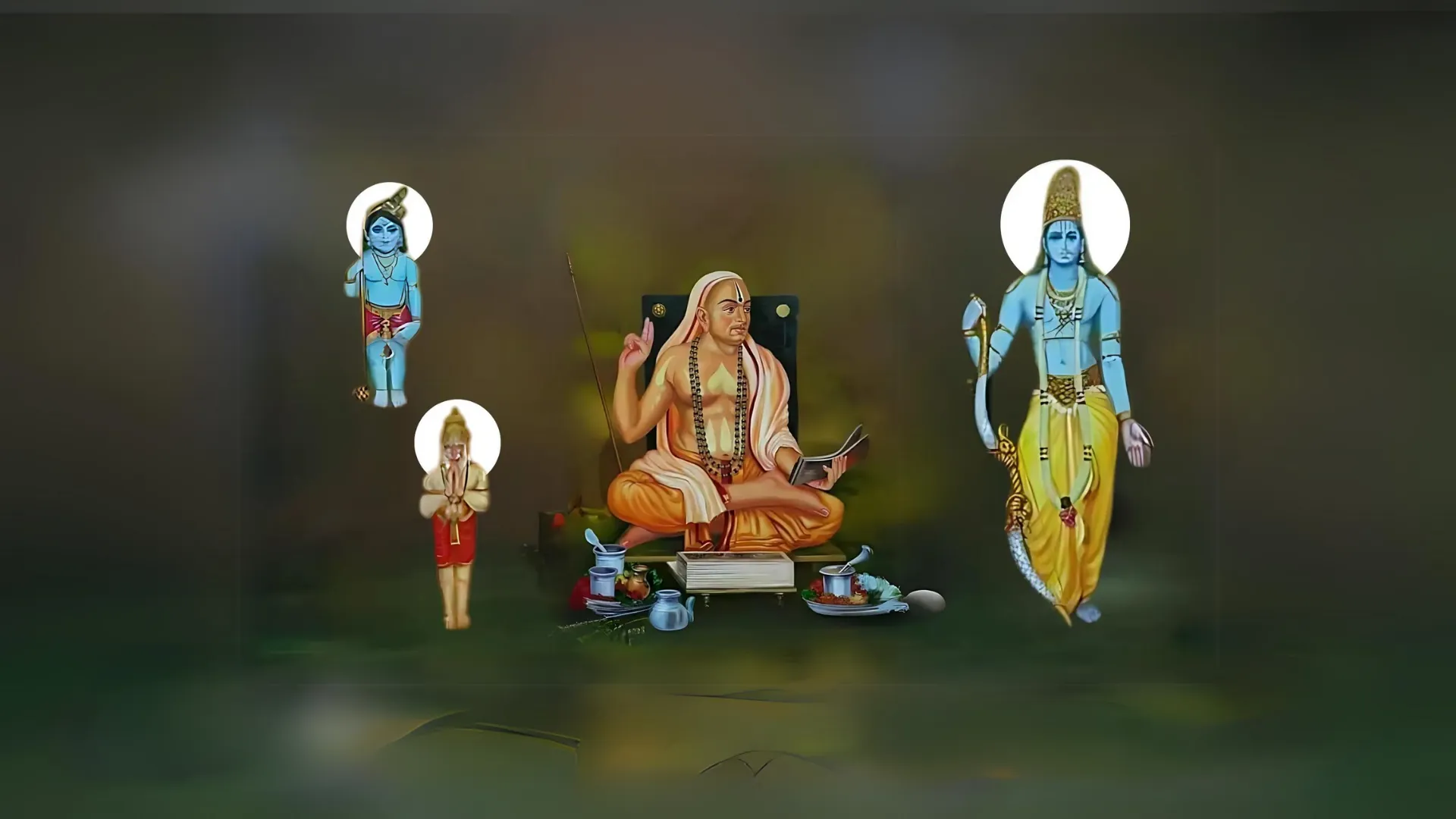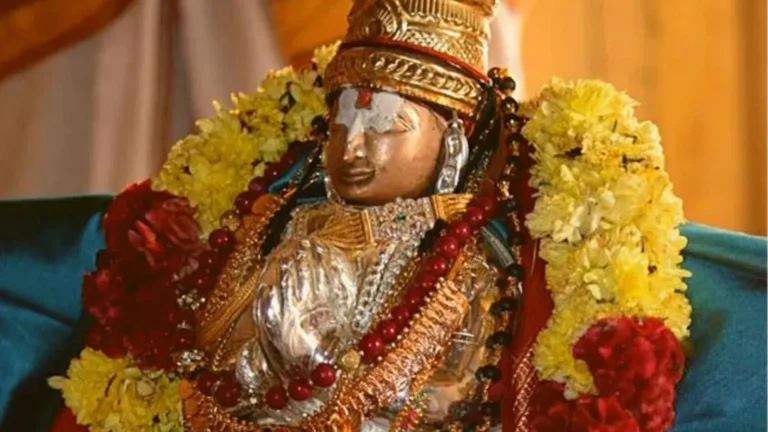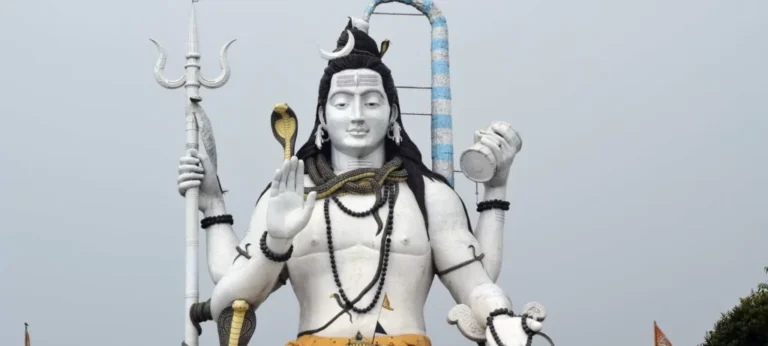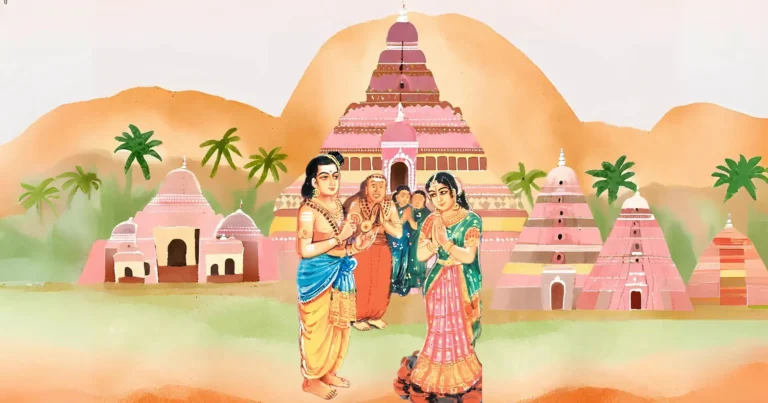Please Like the Blog and Share it for Maximum Reach
Table of Contents
Madhwacharya: Importance of Vairagya in God-Realization
As man, through various ages and lifetimes continues his reincarnation, he discovers a life of Dharma. A man of Dharma avoids all that which is unethical and performs that which is recommended by the Vedic scriptures.
This is achieved through the process of soul-learning. Following this, he develops natural detachment to worldly life and develops “Vairagya”. Only when he takes to such a lifestyle, the existence of Vishnu seems very probable.
Until such time, he is least interested in God or Godly qualities as he continues to drag himself on the earthly plane, leading a sinful life. As ethical life improves, there is an inclination towards spiritual matters. This makes Grace flow into his life and he discovers the various teachings of Sanatana Dharma.
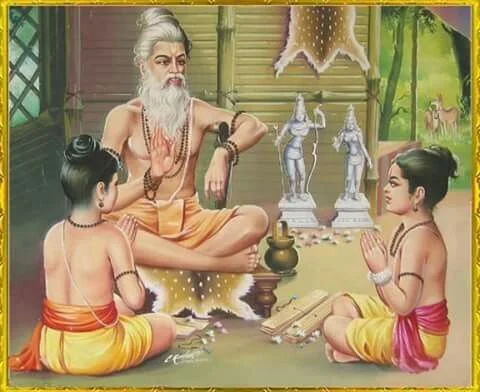
Also, he discovers the teachings of Dwaita Vedanta.He becomes fortunate to discover a Guru (or spiritual preceptor) who educates him about Maha Vishnu.
After having realized one’s constitutional position, the living entity or Jeev undergoes the process of Bhakti. The process of Bhakti includes ethical living and devotional service to the Lord. Now, devotional service can be classified into 9 forms of Bhakti.
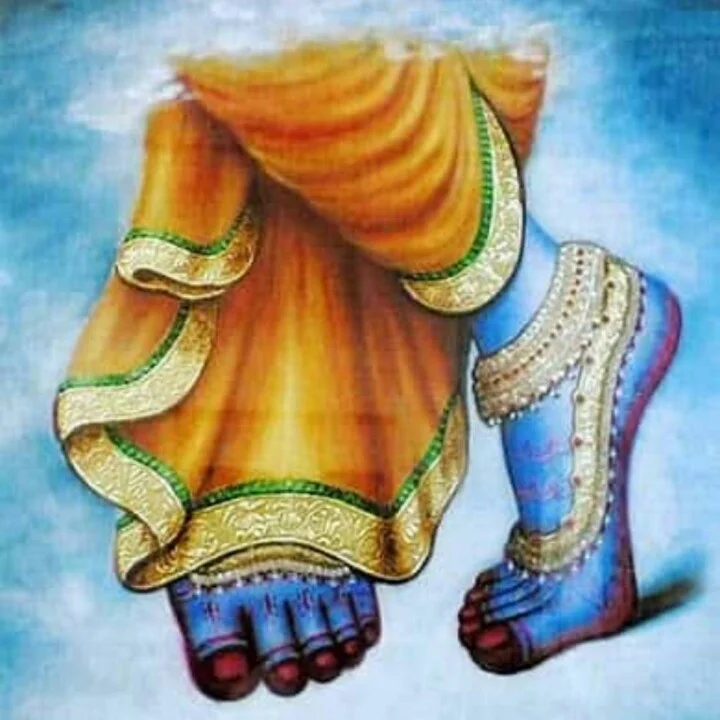
Stages of Bhakti in Madhwacharya’s Philosophy
When one hears the glories of the Lord, one develops an interest in the Lord. He develops deep interests in the activities of the Lord. This according to Madhwacharya is very important as one embarks on the journey of Bhakti. As Bhakti intensifies, Grace starts manifesting.
All accumulated Karma gets wiped out by the dint of Bhakti.
Thus, at the end of one’s lifetime, following Bhakti Dharma, one ascends to the plane of Vaikuntha or the Land of Maha Vishnu.
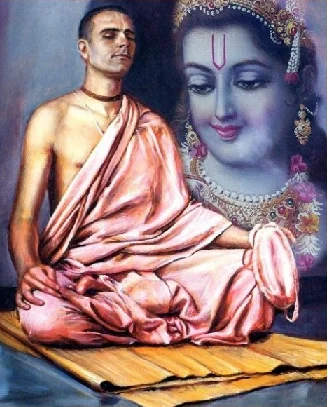
Once the Jeev ascends to the domain of Vishnu, Bhakti increases. Furthermore, it keeps increasing unabatedly. It becomes the source of permanent bliss, never to be lost. One’s association with the Supreme Being Vishnu is never lost. Such is the nature of Bhakti explains Sri Madhwacharya.
Test your Alignment with the Spiritual Subject Matter (only 7-8 Questions)
Important Questions on Liberation
-
What Are The 4 Types of Liberation?
There are four major categories of Liberation as discussed in the Bhakti Shastra.
They are…
1) Salokya: To ascend to the same plane of Vishnu;
2) Samipya: to be in close proximity to Lord Vishnu and to be able to see His beautiful countenance at all times.
3) Sarupya: to attain the same form as Maha Vishnu, the four-handed divine form.
4) Sayujya: to become one with the form of Maha Vishnu. -
What are the 9 forms of Bhakti?
The 9 forms of Bhakti are:
1) Shravana (Hearing the Glories of Vishnu),
2) Kirtan ( Singing the glories of the Lord or praising Him),
3) Vishnu Smaran ( Thinking and Remembering the Lord),
5) Arcana ( Worshipping the Vishnu deity in the temple),
6) Vandan ( Salutations to the Lord),
7) Dasya ( To consider oneself as the eternal servant of the Lord),
8) Sakhya ( Considering the Lord as one’s dear friend or associate) and
9) Atma-Nivedan ( Surrendering one’s all to the Lord). -
What is the Pancha Bheda Philosophy of Madhwacharya?
Madhava’s philosophy of “Pancha Bheda”, highlight 5 crucial differences between Jeeva, Maya, and Bhagawan. Let us see them in detail.
1) Ishwara (Vishnu) and Jeev (living entity) are different.
There is an inherent difference between Ishwara and the living entity. This according to Madhwacharya is the first Bheda.
2) Ishwara (Vishnu) and Jagat/Jada (insentient world) are different.
There is a difference between the insentient world and Ishwara. There can be no comparison between the powers of the Lord and the Jagat, which is wholly dependent on the Lord for its operation.
3) Jeev (living entity) and Jagat/Jada (insentience) are different.
The Jeev is sentient while Jagat is insentient. Naturally, how can these two be compared?
4) Jeev (living entity) and Jeev (living entity) are different.
Every Jeev is different from the other.
This philosophy is radically different from those of Sri Adi Shankara and Sri Ramanujacharya. Every Jeev has inherent qualities with which it operates in the material world. Even if it is liberated, it shall function very differently in the Spiritual world as compared to the other Jeev. This philosophy of Madhwacharya is based on Bheda scriptures of the Vedas which no philosopher has ever attempted to delve into.
5) Jada/Jagat (insentient) and Jada/Jagat (insentient) are different.
Madhwacharya propounded the theory of common sense. We find no similarities between two non-living insentient things. There is no similarity between two sentient beings in the same way.
Sri Madhwacharya detests Sayujya Mukti because, in this type of Mukti, one loses individuality and instead merges with the Lord.
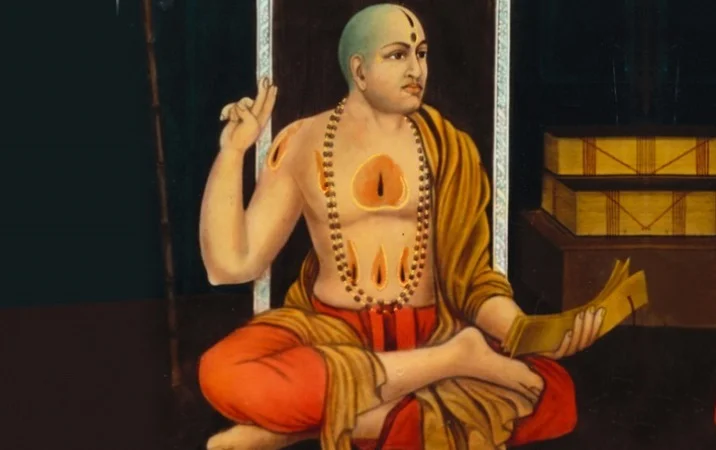
He argues, why should one lose the golden opportunity of being in the eternal presence of the Lord by Attaining Sayujya Mukti?
He warns the devotees of the Lord from such Self-annihilation. Sri Madhwacharya says, when one attains a little Bhakti, Jnana also increases within the Jeev. The knowledge that “I am a spark of consciousness and not the physical body”, takes root.
There is another realization that takes place within the heart of the Jeev. That is Paramatma is higher than the Jivatma. The knowledge that my relationship with Vishnu is Bhakti, starts manifesting in all dimensions of life.
With this Jnana, Bhakti multiplies. From such Bhakti, there emerges Drishti or Divine Vision. One shall be blessed with the vision of the Lord and enlightenment takes place. One’s eternal position as the servitor of the Lord gets established permanently.
It is this highest realization that grants liberation to the Jeev.
Madhwacharya disagrees with Shankara and Ramanuja
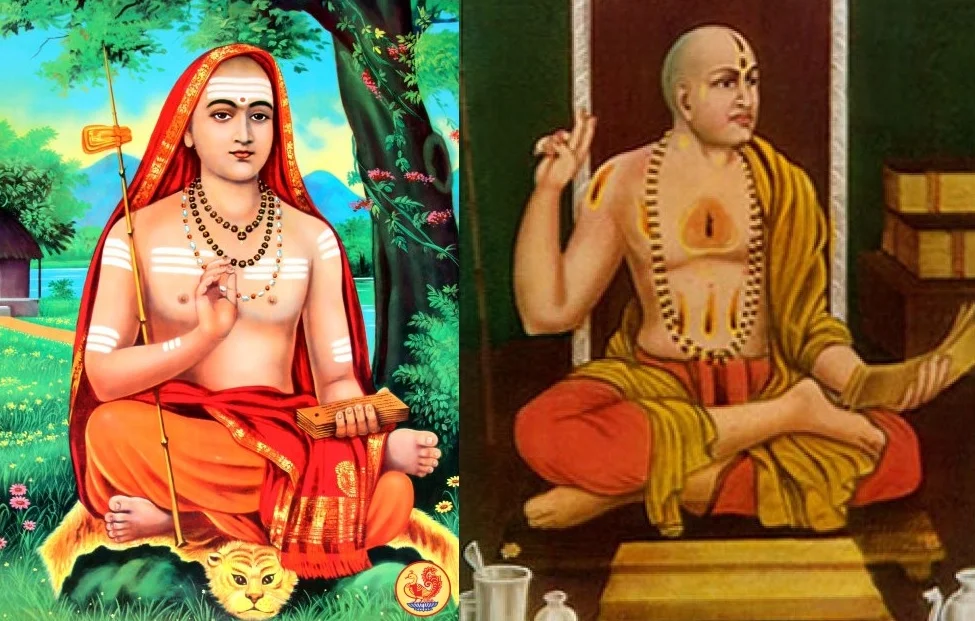
So, in the Madhva philosophy there is plurality of all sorts and no common meeting ground among the three entities of Maya (Jagat), Ishwara (God) and Jeev (living entity).
These differences among the various categorized entities remain to be eternally unreconciled and hence the philosophy of Sri Madhwacharya is radically different from the philosophy of Advaita Vedanta as propounded by Sri Shankara.
Sri Shankara maintained that at the root of all plurality is Brahman alone, in essence, everything is One.
But, Madhwacharya vehemently disapproved of this philosophy of Adi Shankara, The Advaita Vedanta.
Please Like the Blog and Share it for Maximum Reach

